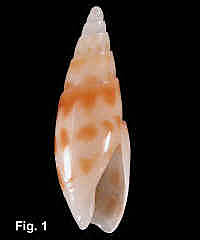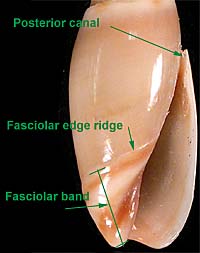|
< Previous family introduction |
|
|||||
 |
Family
Olivellidae
Rice shells
|
|||||
|
The Olivellidae was previously classified as a subfamily of the Olividae. The shells resemble the olives in shape and in having a high gloss, but differ by being smaller, with the aperture only one-third to one-half of the total shell length. They were moved to their own family because of anatomical differences to the olives, particularly the absence of tentacles and eyes, the absence of accessory salivary glands, and the shape of the visceral mass. In contrast to olives, most olivellids have a horny operculum, which covers all of the large aperture. Regardless, the classification of the group is not agreed at family level. The
family is small in size, best represented in tropical and sub-tropical
northern and southern America, with common species extending into temperate
areas of eastern The American species live intertidally or in the shallow subtidal, on sand or mud, sometimes in large aggregations, where they are carnivores or scavengers, including small bivalves in their diet. The Australian species live in the shallow subtidal zone, down to about 100 metres, and most are uncommon, apart from the small, white Cupidoliva nympha which is common in beach drift. Family
References: There in no
revision of the group in Olsson,
A.A. 1956. Studies on the genus Olivella. Proceeding
of the Coverage: All of the species which occur in NSW are treated here. Identification
Notes: Olivellids
have a deeply grooved suture, a character which is also found in the
olives. The columella is
smooth, apart from a strong plait formed by the fasciolar band at the
bottom. The fasciolar band
callus may by transparent, allowing
the underlying pattern to show through, or opaque and obscuring the
pattern. The fasciolar band is demarcated by the fasciolar edge ridge which commences on
the inner lip of the aperture, often adjacent to the centre of the
aperture.
|
